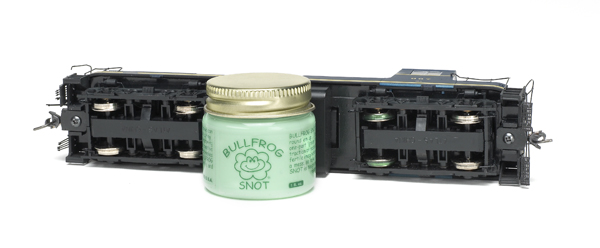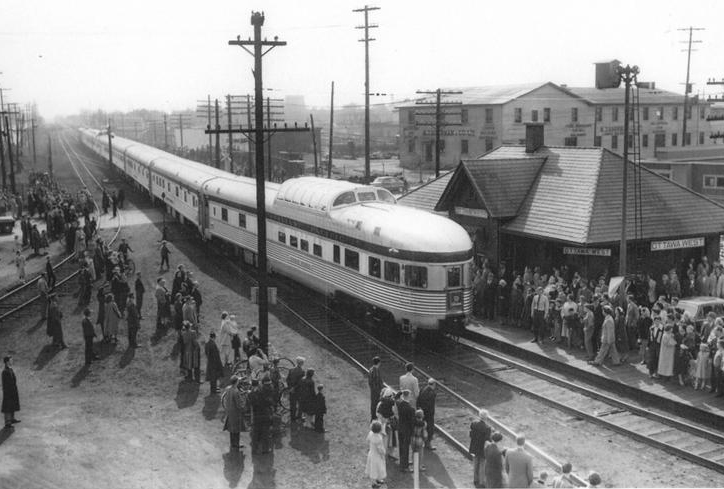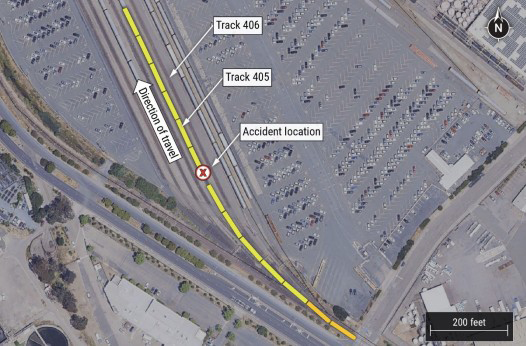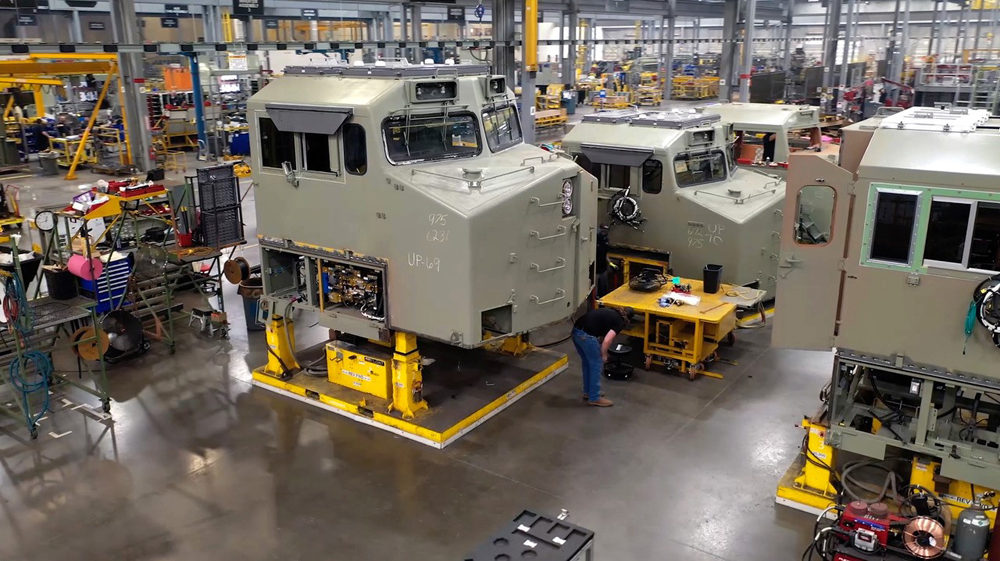Manufacturer
Frogs Frills and Daffodils
21951 Cosala
Mission Viejo, CA 92691
www.bullfrogsnot.com
Comments: The name may make it sound like a joke, but it’s Snot.
Bullfrog Snot is a one-part, self-curing liquid plastic designed to be applied to the tread of model locomotive wheels. When it dries 24 hours after application, it forms a thin, greenish traction tire.
I used a scrap of stripwood to apply Bullfrog Snot to one set of wheels on two locomotives, an Atlas HO scale Fairbanks-Morse H-16-44 and a Life-Like N scale RS-2. The results were significant.
According to the force meter in our workshop, which we use to measure drawbar pull, the N scale Alco went from having a drawbar pull of .64 ounces (equivalent to 15 cars on straight and level track) to .96 ounces (equal to 23 cars). The HO scale road switcher went from a drawbar pull of 3.52 ounces (49 cars) to 8.8 ounces (123 cars).
Bullfrog Snot is a boon for locomotive models with poor traction.















Thanks for the review. I have a Rivarossi 4-8-8-4 big boy whose traction tires broke off,and I had been wondering if it would be able to climb a 2% or 3% percent grade again. Now that I know about this Bullfrog Snot, my locomotive should be able to attack the grades again. Thank you!
Sounds great,…..er,might re-phrase that,sounds like it works great. How long does it last before reapplying and does it need cleaning off to prevent lumps of congealed snot building up?
Now if I can just get past the image in my mind that conjures up!
(pictures of holding one's loco at arms length,with head turned, looking at it with one eye and face screwed up)
How do they name this stuff?
Can this be used as a replacement for traction tires when they come off a steam locomotive? In other words, is it thick enough to fill the depression that the standard traction tires fit into?
Can this product be used on O gague locomotives….?
Thanks,
Bob Mclaughlin
Curious to try this product for myself I set up a test on my layout just to see if it worked as well as it claims. I took an average Atlas RS-3 that runs well but can not pull as many cars as I would like to see. I coupled twelve cars behind the engine and sent it towards one of the grades I have on my railroad at a typical speed that I run most of my trains. Sure enough the RS-3 made it up the grade about a quarter of the way then stalled out spinning its wheels and going nowhere.
Taking the engine off the track I placed it into a form cradle belly side up and connected power to the wheels. Turning the power about mid way I took the tip of a toothpick and applied a thin layer of the light green BULLFROG SNOT to one axle (two wheels) of the engine.
I continued to let the wheels spin after the coat was applied and let the centrifugal forces self level the BULLFROG SNOT around the wheels. After about ten minutes I turned the power off and let the engine sit belly side up over night to cure. Important note: If the wheels are spinning away from the point of the toothpick the BULLFROG SNOT will coat the wheels in a nice even layer. If you apply BULLFROG SNOT with the wheels of the engine spinning towards the point of the toothpick it tends to clump up and does not spread over the wheels evenly. A tapered coffee stirrer or a piece of styrene similar to the same width of the wheels may work better for applying BULLFROG SNOT to larger scale engines.
After the BULLFROG SNOT dries the light green color becomes more of a transparent green. In my opinion the 1 oz. jar should last a modeler for quite a while no matter what scale they are applying this to. Now came the real test, I tried pulling the same twelve cars at the same speed to see the results. To my surprise the engine headed up the grade pulling the same twelve cars and passing the point where it had previously stopped. There was no stalling and no wheel slipping whatsoever. I did notice a little wobbling to the engine after the BULLFROG SNOT was applied but after some continuous running the wobbling went away and the traction effort of the engine remained the same.
If you use a Walther’s Bright-Boy, Minitrix Wheel Cleaning Brush, or the Kadee Bissell Wheel Cleaner the abrasiveness in time may peel off the BULLFROG SNOT. However these same products do not work well with most plastic traction tires either and can damage them. According to the information sheet that comes with BULLFROG SNOT if it wears off just turn the engine belly side up; get the wheels rotating and scrap off the old layer with the blade of an X-Acto knife. Once the old layer is gone and the wheels are clean a new coat of BULLFROG SNOT can be reapplied.
I will have to monitor how long the BULLFROG SNOT will last and if it leaves any kind of film behind on the tracks. However my initial impression is that this makes the chore of adding traction tires simple. I have noticed no change in the electrical conductivity to the engine I tried this on. For older engines without flywheels I would suspect the electrical conductive could be compromised.
Are you guys serious!!!!!!! I received my copy of Model Railroader in the beginning of April, and when I read this ad, my first thought was.. OK this must be their April Fool joke for the year. If it is, it's a good one because it does actually look like a legitimate product, but if it isn't, good luck trying to sell it, bercause I don't think I could buy something with that name. Take care, Tom Ryan
How much did you apply for it to shrink down paper thin? Did you run the wheels on the stripwood or did you apply it directly to the wheels like it were brushed on?
I have used this stuff for a while and it takes a bit of time and experimentation to get it just right, even with reading the instructions. It really helps on my old steamers, especially since this was my first layout and rather ambitious–problem is–I have a couple of grades that are absurdly steep (lack of experience during layout planning!) and without this stuff I could not get certain locos up the hill without a pusher loco at the end; this stuff helped me overcome much of my poor planning! Although the price seems steep, so little is used each time that I suspect one would never need to buy a second bottle…..
This is great stuff. I have used it on my Schuco monorail and it is great. The monorail runs much better now. I have also used it on my Fleischmann HO turntable and it made it run better. This turntable is the #1780. The four wheels which supports the turntable had the rubber traction tires wore or missing, I just applied the Snot into the metal groove in layers until I had the right thickness.
What effect will this have on electrical pickup besides no contact on the wheel in question.
I have some of this but haven't used it yet. I understand you have to put the loco in a cradle (I was thnking of using a hollowed piece of foam) upside down and then run it for a fairly long time to make sure the snot dries evenly. My question is; do you just sit there and hold the alligator clips or a (kadee brush) on the wheels for a half hour? Is there a better way to just let it run and leave for a while and come back?
This sounds like just what I need for some older locomotives that cannot pull very many cars at all. Thanks for the writeup.
I run N Scale. Is there something for N Scale engines that would supply power to the pickup wheels to keep the wheels rotating in the cradle for 30 minutes while the "Snot" cured partially?
If I read the questions and answers correctly, you would only apply the Bullfrog Snot to one set of drive wheels, not all (as many drive wheels also are power pick-up wheels also), is that correct?
I have a 2-6-0 Camelback engine with electrical pick up on the right side drive wheels. Do you think I could apply the traction solution to the right read drive wheel AND to all three non-pick upn wheels on the left side ??
I've got a Rivarossi Challenger with a tire that keeps popping off and fouling the running gear. It looks like the best thing is to cut it off and apply snot to the groove. Question: Can snot be used to "glue" the original rubber traction tire back on with a thin layer over it keeping it in place?
(Yo, Ray! Get over it. It's not really snot. It's plastic. Just put the image out of your mind or think of it like a glue or similar product like Micro Crystal Clear or masking fluid. )
I can't tell you the number of people I know who have been looking for a solution to the traction tire replacement dilemma on HO steamers. This is truly a halleluia moment for model railroaders!
This stuff should prove useful to those of us with older, basic locomotives (e.g. Tyco, pre Proto Life-Like, AHM, etc.) whose original traction tires have worn out or have broken off.
So, if you don't have alligator clips, how would you apply the stuff all the way around the wheel?
I have not tried this stuff yet but the idea is fanastic. I have older models that are hard to find replacement traction tires and wont run well without them. I am anxous to try this out. I will submit another comment when I get results. I am also very interested in how long "Bullfrog" lasts between applications and how well it will fill the flange releif where the old traction tire used to rest. Great Idea!
Is this product suitable to improve an old dry rubber tire?
I have a Q. What if I put an engine that I aply it to (and let dry as instructions say) in a roundhouse stall and don't run it far a while like a month or more, becouse of either forgetting it is in there or don't have time to go down stairs to the layout. Will the snot get uneven and lumpy then? Thanx Tom….
Hi Peter,
I put the locomotive in a cradle to sit upside-down and rigged up a couple of alligator clamps to a power pack so I could let it run while applying. I then used the stripwood (only because I couldn't find the toothpicks) to pick up a drop of Bullfrog Snot and touch it to the rotating wheel. I didn't apply any pressure, but I did hold the stripwood to the wheel lightly to distribute the Snot. I then let the wheels spin for the next half-hour or so while the Snot started to cure; this ensured the distribution would remain even, rather than sagging to one side of the wheel.
The first time, I applied too little Snot, and ended up with a lumpy, uneven tire that I had to chisel off and redo. Then I read the instructions. 🙂 On my second application, I applied a larger drop, which made a bead thick enough to pretty much fill the tread area up to the depth of the flange. I wasn't sure it would shrink down that much, but it did.
As for its durability, we haven't run the engines enough to know how long the stuff lasts. The manufacturer says it does have to be removed and replaced occasionally, but it takes so little Snot to do a pair of tires that one jar should last a long time. As for cleaning it off the rails, that's not an issue. Once it cures, Bullfrog Snot isn't rubbery; it doesn't come off. It's a plastic, with a level of tackiness less than that of Saran Wrap. If you don't clean your rails often, though, you will find yourself having to more frequently clean gunk the Snotted wheels pick up.
Hope that answers your questions.
Hi Ray,
Obviously, you wouldn't want to apply Bullfrog Snot to more than one pair of drivers, because those wheels wouldn't have electrical contact any more. But that would be true of any traction tire. And you don't have to worry about the thickness of the traction tire lifting other wheels off the rail, either. Bullfrog Snot shrinks down to a very thin layer when it cures. The amount of play built into model locomotive drivers to compensate for uneven track should easily handle that, even on a long, rigid-wheelbase engine like a Decapod. Just apply it to one pair of wheels per locomotive and they should work fine.
Hi Edward,
When I put the locomotive in the cradle, I threaded two pieces of thin wire under the back truck so they hooked over the electrical pickups, then used a rubber band to hold them in place. I attached the alligator clips to those wires. I then applied the Bullfrog Snot to one axle of the front truck.
its not much use to the bullfrog any more,we may as well use it.